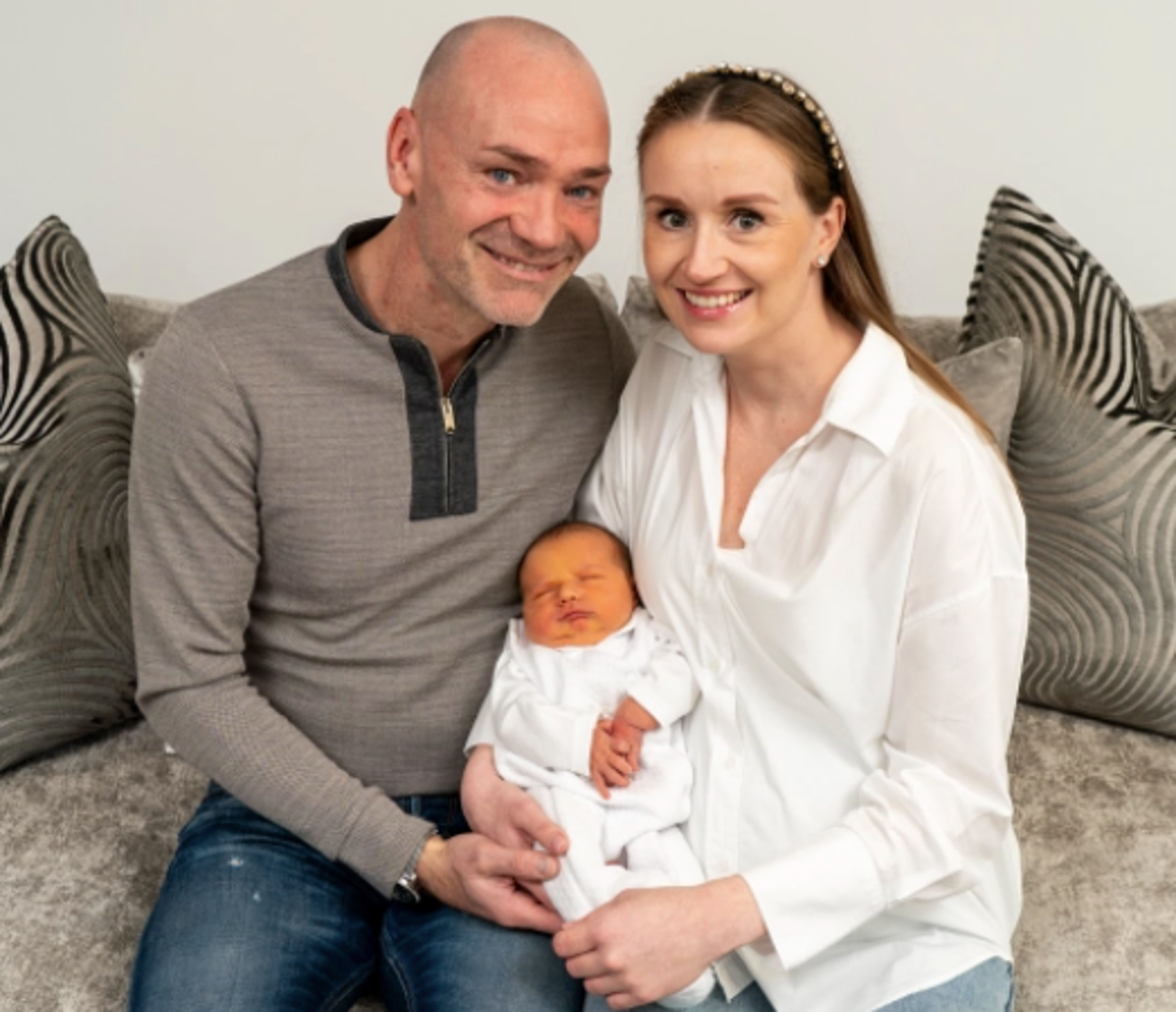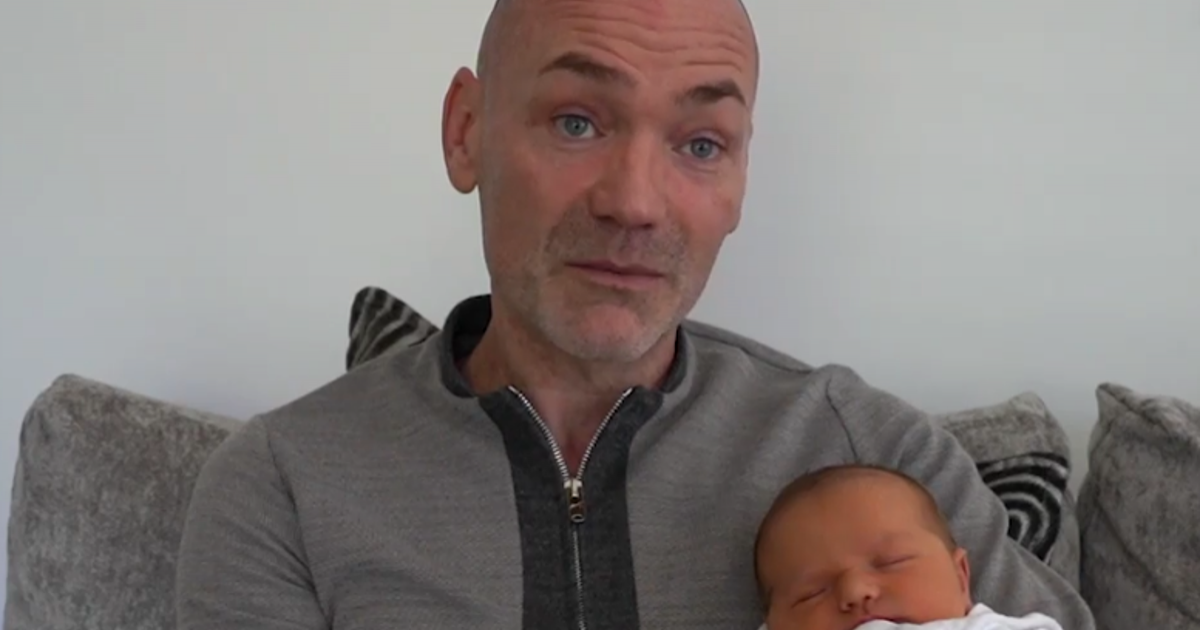Fertility After Cancer
- Peter Hickles, who considers himself “lucky” after the arrival of his son, submitted his sperm sample on June 5, 1996, after being diagnosed with Hodgkin's lymphoma.
- Hickles, 47, learned he had Hodgkin’s Lymphoma when he was just 21 years old.
- Lymphoma is a type of cancer that is generally classified as either Hodgkin Lymphoma or Non-Hodgkin Lymphoma. The distinction between the two has to do with a person's white blood cells linked to the disease.
- A cancer diagnosis may be scary, but it doesn’t mean fertility is out of the question. Terry Lynn Woodard, an Associate Professor at the University of Texas MD Anderson Cancer Center, previously told SurvivorNet that there are multiple options for fertility preservation, depending on the type of cancer someone is diagnosed with.
The new dad, who considers himself “lucky” after the arrival of his son, submitted his sperm sample on June 5, 1996, after being diagnosed with Hodgkin's lymphoma at age 21.
Read More
Before undergoing nine rounds of chemotherapy treatment, Hickles went to the hospital to give a sperm sample as doctors recommended.
He explained, "It was a bit grotty having to do it. There were magazines left in a cubicle. I'll never forget it. I had to hand the little plastic pot to reception and for some reason, it's always a young woman. I had to wait for an hour while they checked the quality so I nipped off for a couple of pints and when I got back they said everything was fine."
Hickles was told his sperm would remain usable for up to 10 years, but advancements in medical technology elongated that time frame.
"After the chemotherapy, I was left with no sperm count which is something many male cancer sufferers experience. When I got together with Aurelija we wanted a child but knew it would be difficult. I'm incredibly lucky to have her,” he said. “Luckily, the sperm sample was judged to be viable so we decided to give IVF a go."
After spending nearly $35,000 on IVF treatment, the pair conceived using Hickles’ sperm sample which was held in a freezer at University College Hospital in London.
“I can't believe he's arrived now. I'm such a lucky dad,” Hickles said.
Fertility Preservation After Cancer
A cancer diagnosis may be scary, but it doesn’t mean fertility is out of the question. Terry Lynn Woodard, an Associate Professor at the University of Texas MD Anderson Cancer Center, previously told SurvivorNet that there are multiple options for fertility preservation, depending on the type of cancer someone is diagnosed with.
“The standard-of-care options for fertility preservation for women would be egg or embryo freezing. For men, it would be sperm banking,” Woodward explained. “However, there are other options that would include Ovarian Tissue Freezing for women, Testicular Tissue Freezing for men, and something called Ovarian Suppression for women; where we give them medication to shut down the ovaries while that patient is getting chemotherapy.”
Preserving Fertility During Cancer Treatment What Are the Options?
In regards to men in need of cancer treatment, Woodward advises them to question their doctors on what type of treatment they will have and how it will affect their fertility.
“If they think they want to have a child in the future or even if they’re unsure they should ask about sperm banking,” Woodard told SurvivorNet. “Fortunately sperm banking is much cheaper and much easier than freezing eggs or embryos is for a woman. Unfortunately, we still miss a lot of men because they simply don’t know that this is something that is available.”
Woodward noted it may be significantly easier for men to save their sperm as it’s less costly than preserving an egg or an embryo, but men need to be proactive and ask whether the drugs they will be taking can affect their fertility.
Jamie Knopman, the director of fertility preservation at CCRM New York, also spoke with SurvivorNet about fertility preservation and explained how she doesn’t see many men coming in to freeze sperm before cancer treatment.
“Usually, men that are going to freeze sperm, we send them to a clinic. And so, they will go there, they'll produce a sample or a couple of samples, and then that’ll be frozen for the future,” Knopman said. “I’m more likely to see a couple where the male partner has been diagnosed with cancer, but they want to move forward with fertility treatment immediately. And oftentimes, what we'll do in that case is they'll just freeze sperm and then we'll use the sperm down the road to make embryos, or to do inseminations, or whatever it may be.”
Understanding Hodgkin Lymphoma
Hickles received a diagnosis of Hodgkin Lymphoma when he was just 21 years old. Lymphoma is a type of cancer that is generally classified as either Hodgkin Lymphoma or Non-Hodgkin Lymphoma. The distinction between the two has to do with a person's white blood cells linked to the disease.
If doctors are unable to detect the Reed-Sternberg cell (a giant cell derived from B lymphocytes), then the lymphoma is categorized as Non-Hodgkin lymphoma. However, if Reed-Sternberg cells are present, the lymphoma is diagnosed as Hodgkin Lymphoma.
The Difference Between Hodgkin and Non-Hodgkin Lymphoma
In an earlier interview with SurvivorNet, Dr. Elise Chong, a medical oncologist at Penn Medicine, said that lymphoma symptoms can be difficult to detect, and thus can lead to a late diagnosis. "The symptoms of lymphoma, especially if you have a low-grade lymphoma, often are no symptoms. People say, but I feel completely fine, and that's very normal," said Dr. Chong.
Contributing: SurvivorNet Staff
Learn more about SurvivorNet's rigorous medical review process.

